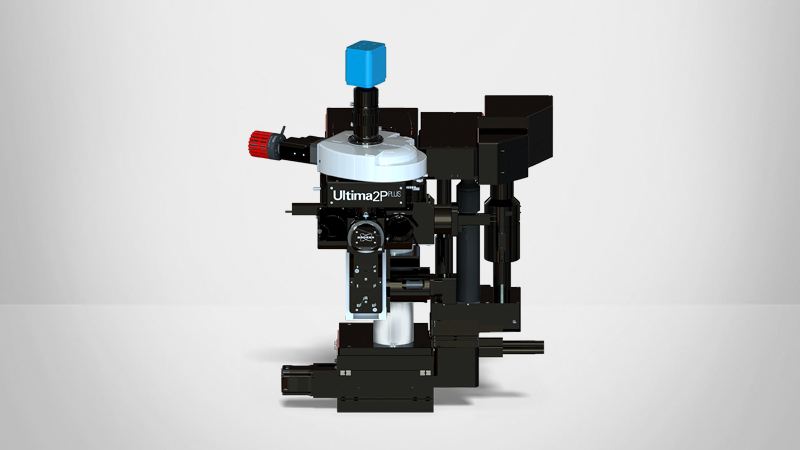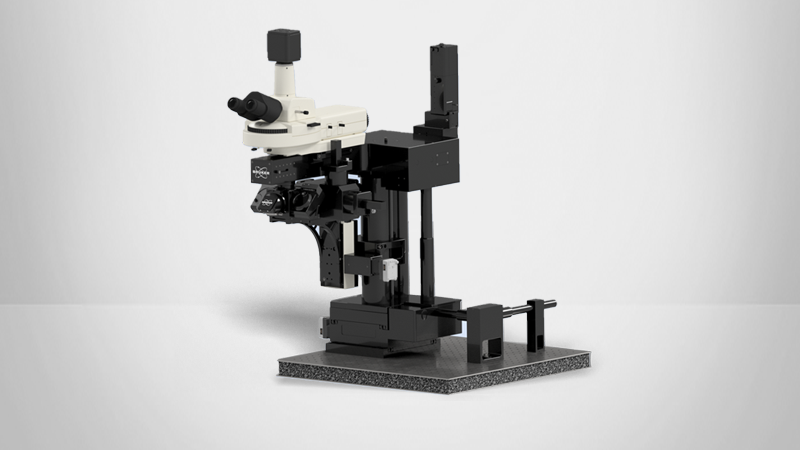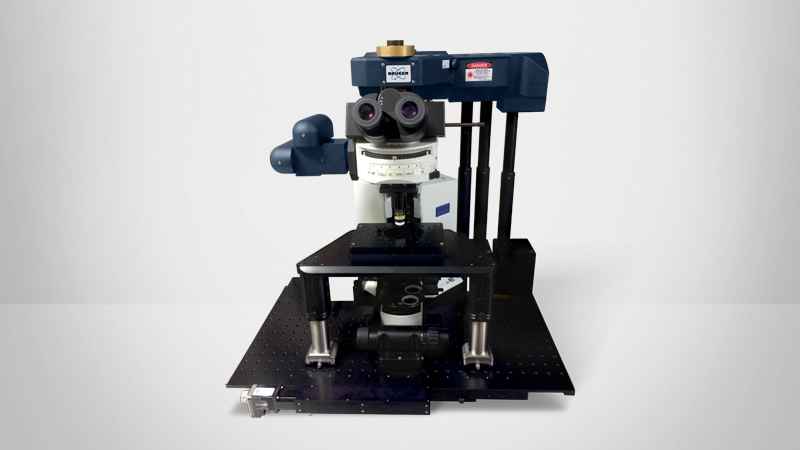Point-Photo Stimulation Module
The Point Photoactivation Module is the input module for fiber-coupled lasers with FC connectors, including Bruker Helios Laser Launch. This module is typically used in optogenetics, neurotransmitter uncaging, and other applications that require precise laser technology.
The module is compatible with all Bruker multiphoton microscope systems in the Ultima family. It allows input from a visible laser via single mode optical fiber into the uncaging light path of the microscope scanner. It also includes scan-head and epi-turret glass to allow transmittance of selected visible wavelengths.
Simultaneous photo-stimulation and imaging of selected targets is enabled with dual optical light paths. In addition to imaging galvos, a second pair of galvanometric mirrors is provided to precisely guide 1P laser beam between selected targets independently from the raster scan provided by primary imaging galvos.
The operator can adjust the size and shape of the laser spot in the sample by manually adjusting the optics inside the Point Photoactivation Module. The spot size ranges from a diffraction-limited spot (.3μm) to 20μm (objective dependent). Typically, spot sizes are smaller for a 60x/1.0NA objective, and larger for a 20x/0.5NA objective.
The figures below illustrate how the characteristics of the laser beam at the sample depend on optical elements engaged in point-photoactivation module.
Standard Path
With focusing lens OUT of a module, laser beam at the objective has an hourglass shape. Large area of out-of-focus sample is illuminated.
Lens In
With focusing lens IN a module, laser beam at the objective has a pencil shape. Limited area of out-of-focus sample is illuminated.


